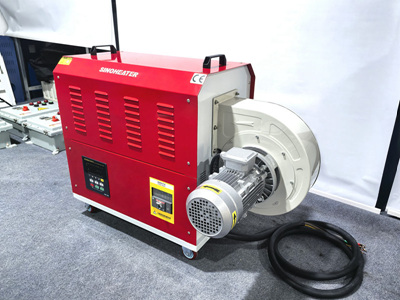Advanced Heating Techniques for Plastic Surface Treatment Using Hot Air Blowers
Plastic surface treatment processes such as painting, printing, and adhesive bonding require precise temperature control to enhance material adhesion and durability. Hot air blowers provide a versatile solution for heating plastic surfaces uniformly, but improper use can lead to defects like warping, uneven coating, or thermal degradation. Below are detailed techniques for optimizing hot air blower applications in plastic surface treatment.
Temperature Management for Different Plastic Types
Thermoplastic vs. Thermosetting Plastic Heating
Thermoplastics (e.g., ABS, polyethylene) soften when heated and harden upon cooling, making them ideal for processes like vacuum forming. For these materials, hot air blowers should maintain temperatures between 80–100°C to ensure proper adhesion without causing deformation. Thermosetting plastics (e.g., epoxy resins), which cure irreversibly, require lower heating temperatures (60–80°C) to activate chemical cross-linking without overheating.
Avoiding Thermal Degradation
Exceeding 120°C can cause thermoplastics to degrade, leading to brittleness or discoloration. Use infrared thermometers to monitor surface temperatures continuously. For example, when treating polycarbonate sheets for printing, maintain temperatures below 110°C to prevent surface cracking. Adjust blower distance (15–30 cm) and airflow speed based on material thickness—thinner sheets (1–2 mm) need shorter heating intervals (10–15 seconds), while thicker sections (5 mm+) require longer exposure (30–45 seconds).
Gradient Heating for Complex Shapes
Curved or irregular plastic components (e.g., automotive dashboards) demand directional heating. Position the blower at a 45° angle to the surface to ensure even heat distribution. For deep-draw applications, heat the convex side first to expand fibers, then the concave side to prevent compression breaks. This dual-stage approach reduces springback (the tendency of plastic to return to its original shape) by 30–50%.
Application Strategies for Uniform Surface Activation
Preheating for Adhesive Bonding
When bonding plastic parts with adhesives, preheat the surfaces to 50–70°C using a hot air blower. This activates the adhesive’s curing agents and improves molecular penetration. For instance, in assembling acrylic display panels, preheating both surfaces for 20 seconds enhances bond strength by 40% compared to room-temperature bonding.
Surface Cleaning and Activation
Hot air blowers can remove moisture and volatile contaminants from plastic surfaces before treatment. Blow hot air (60–80°C) across the surface for 5–10 seconds to evaporate residual solvents or oils. This is critical for processes like screen printing, where oil residues can cause ink smudging. After heating, wipe the surface with a lint-free cloth to ensure cleanliness.
Post-Heating Stabilization
After heating, allow the plastic to cool naturally for 5–10 minutes before applying coatings or adhesives. For large-scale projects, use cooling fans set to low speed to accelerate stabilization without introducing drafts. Avoid handling the plastic until it reaches room temperature to prevent warping. For example, when treating PVC pipes for threading, cooling for 8 minutes ensures dimensional accuracy.
Safety and Process Optimization
Ventilation and Fume Control
Heating plastics can release volatile organic compounds (VOCs). Ensure the workspace has exhaust fans or open windows to disperse fumes. When working indoors, use a blower with a built-in air filtration system to minimize airborne contaminants. For processes like hot stamping, which involves heating foil onto plastic, proper ventilation reduces inhalation risks.
Protective Gear and Surface Prep
Wear heat-resistant gloves and safety goggles to shield against hot air and flying debris. Before heating, clean the plastic surface with a degreaser and wire brush to remove dirt or old finishes. For resinous plastics (e.g., cedar-like composites), sand the surface lightly to prevent resin buildup on the blower nozzle.
Fire Prevention Measures
Keep flammable materials (e.g., solvents, rags) at least 3 meters away from the heating area. Have a fire extinguisher rated for Class A (ordinary combustibles) and Class B (flammable liquids) fires within easy reach. After heating, inspect the plastic for glowing embers or hot spots before applying pressure. For example, when treating polypropylene casings for electronic components, a 5-minute cooling period eliminates residual heat.
By adhering to these guidelines, manufacturers can achieve flawless plastic surface treatments while maintaining safety and efficiency. Proper temperature management, directional heating, and post-treatment stabilization are key to producing high-quality plastic components.



